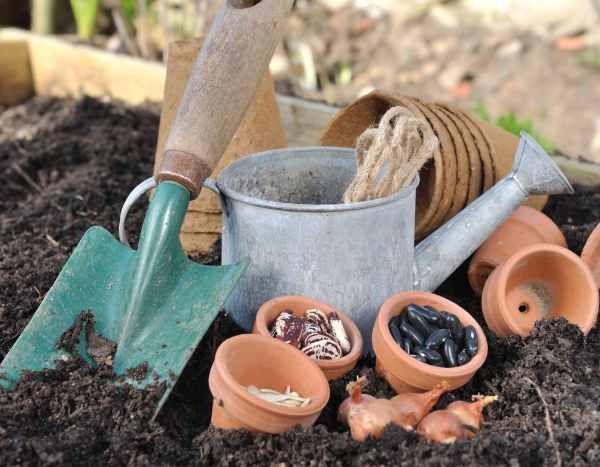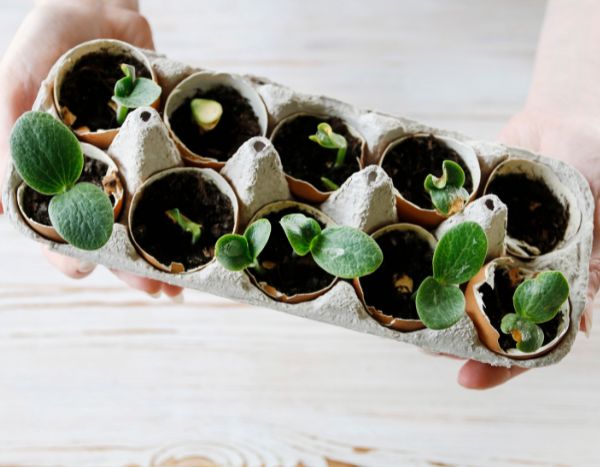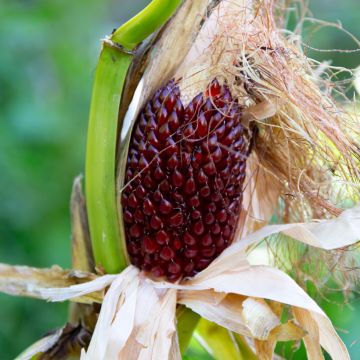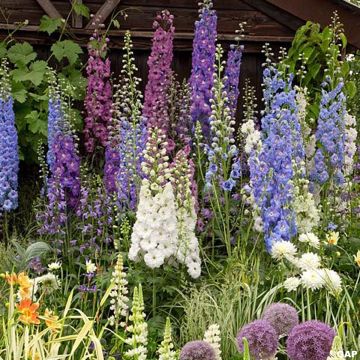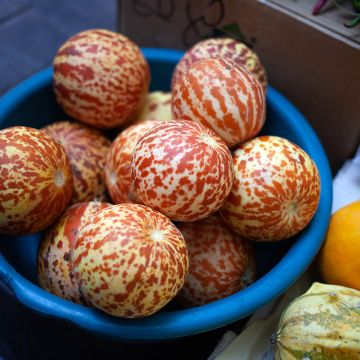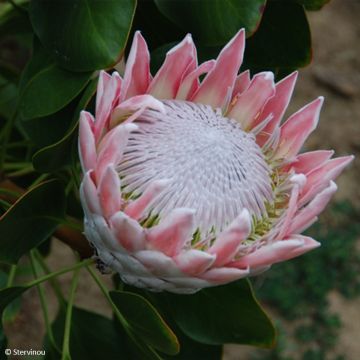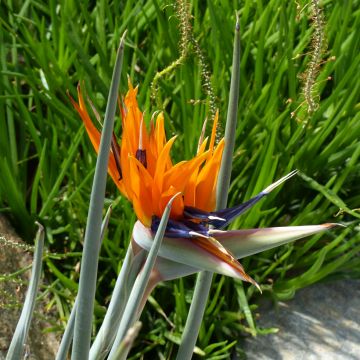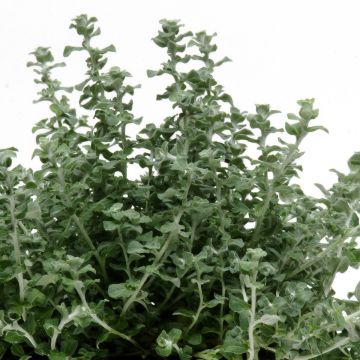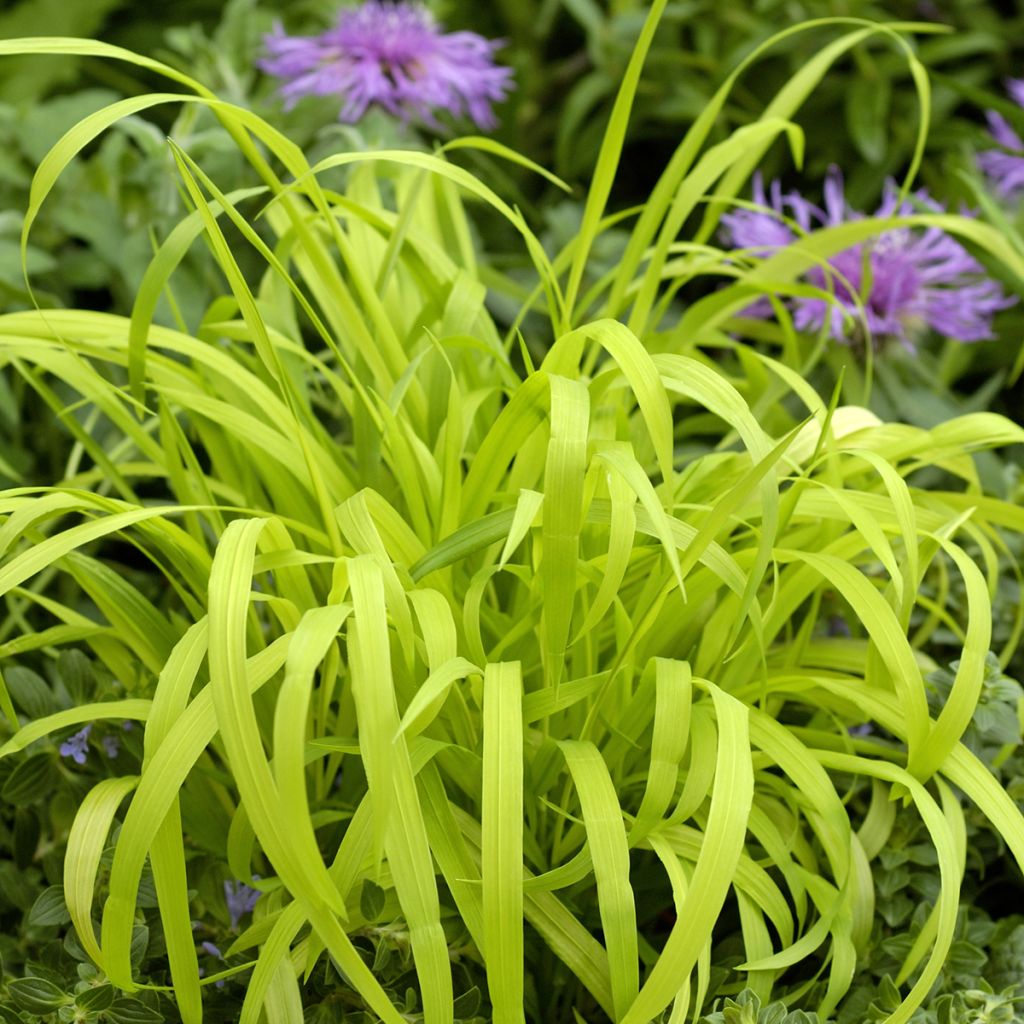

Milium effusum Aureum seeds - Golden Grass
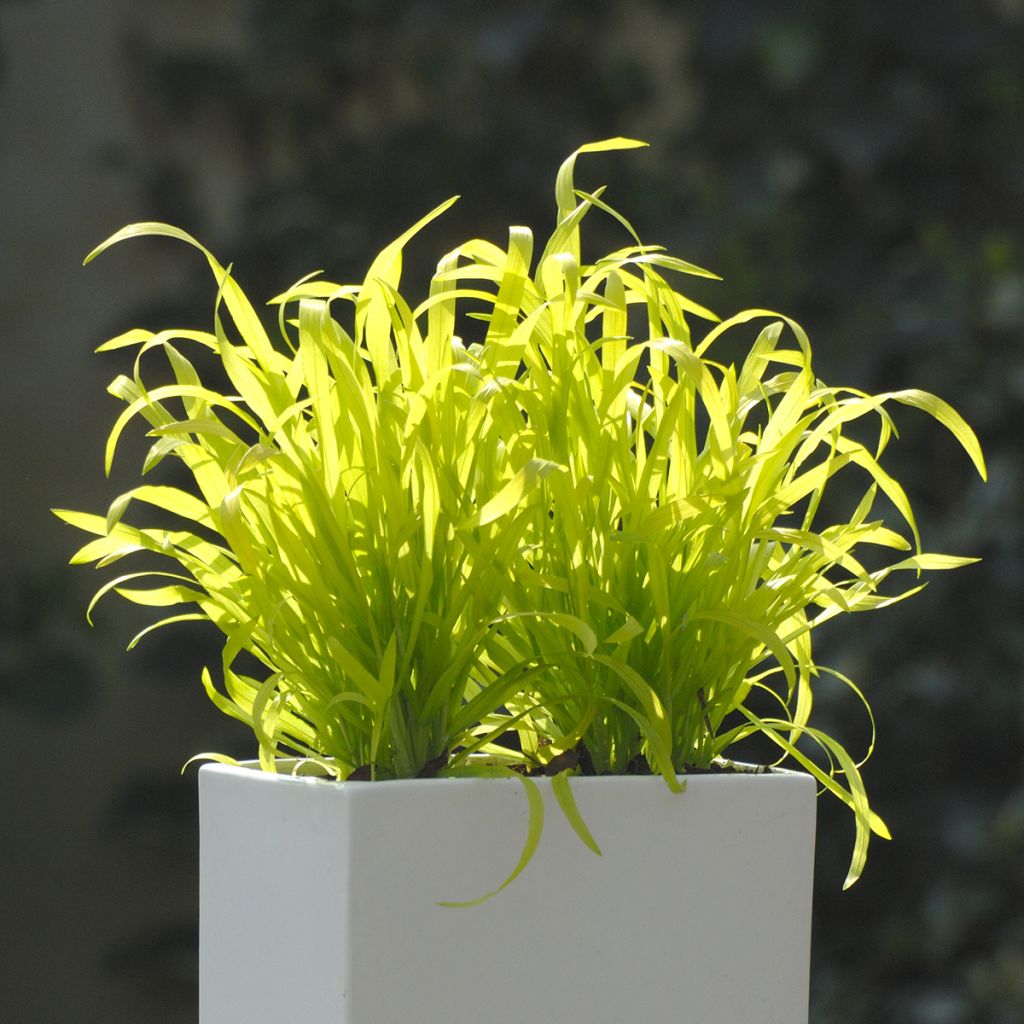

Milium effusum Aureum seeds - Golden Grass
Milium effusum Aureum seeds - Golden Grass
Milium effusum Aureum
Bowles's golden Grass
Special offer!
Receive a €20 voucher for any order over €90 (excluding delivery costs, credit notes, and plastic-free options)!
1- Add your favorite plants to your cart.
2- Once you have reached €90, confirm your order (you can even choose the delivery date!).
3- As soon as your order is shipped, you will receive an email containing your voucher code, valid for 3 months (90 days).
Your voucher is unique and can only be used once, for any order with a minimum value of €20, excluding delivery costs.
Can be combined with other current offers, non-divisible and non-refundable.
Home or relay delivery (depending on size and destination)
Schedule delivery date,
and select date in basket
This plant carries a 6 months recovery warranty
More information
We guarantee the quality of our plants for a full growing cycle, and will replace at our expense any plant that fails to recover under normal climatic and planting conditions.
Does this plant fit my garden?
Set up your Plantfit profile →
Description
Milium effusum 'Aureum', also known as golden millet or golden wood millet, is a valuable perennial grass for brightening up shaded areas of the garden or terrace. From spring, its almost fluorescent yellow leaves enliven woodland understories and partially shaded borders. Its soft habit and modest stature integrate easily into naturalistic scenes. It is very hardy and easy to grow, requiring little maintenance in rich, moist, and well-drained soil. In pots or in the ground, it brings light even to the shadiest corners.
Milium effusum 'Aureum' is a grass belonging to the Poaceae family. It is sometimes called golden millet, spreading golden millet, or golden wood grass. The scientific name of the type species is Milium effusum, and the cultivar 'Aureum' is also known by the synonym Milium effusum ‘Bowles Golden’. It has been cultivated in Europe since the early 20th century and is often attributed to the selections of the British horticulturist E.A. Bowles. 'Aureum' is distinguished by very bright yellow foliage in spring, whereas the species is a uniform soft green.
Native to temperate zones of the northern hemisphere, Milium effusum grows naturally in damp forests, riparian woodlands, and shaded meadows, from Europe to Central Asia, as well as in North America. It is a perennial plant in the strict sense: it persists for several years thanks to its buds, which produce new leafy shoots each spring from a short, fibrous root system. It does not form lateral runners and grows in a dense clump, with no invasive character.
Milium effusum 'Aureum' has a soft, upright to slightly trailing habit, particularly graceful when grown in a cool, partially shaded location. Its growth is relatively fast: it reaches its mature size in two to three years. In the ground, the plant measures 40 to 60 cm tall, sometimes a little more in rich soil, and spreads to about 40 cm. In a pot, its height stabilises around 30 to 40 cm with a proportional spread, depending on the container volume. The leaves are deciduous; they dry out in autumn. They are long, thin, ribbon-like, and measure 5 to 15 cm long. Their colour is a very bright lemon yellow in spring, which may green slightly in summer, especially in direct sun or during drought. The discreet inflorescences appear from May to July, in the form of loose, airy panicles held above the foliage. This flowering adds a soft, ethereal texture to the whole.
Golden millet is often used to brighten up dark areas of the garden without requiring much maintenance. It can be paired with other woodland plants such as Hosta 'Halcyon', whose broad blue leaves form a dense carpet. The silver, veined foliage of Brunnera macrophylla 'Jack Frost' complements its golden spring foliage, while the young copper-pink fronds of Dryopteris erythrosora add softness to the composition. At the back of a border or on the edge of a woodland, a few clumps of Epimedium and lungworts will complete this forest scene, offering in turn discreet flowers, textured foliage, and seasonal softness.
Report an error about the product description
Milium effusum Aureum seeds - Golden Grass in pictures
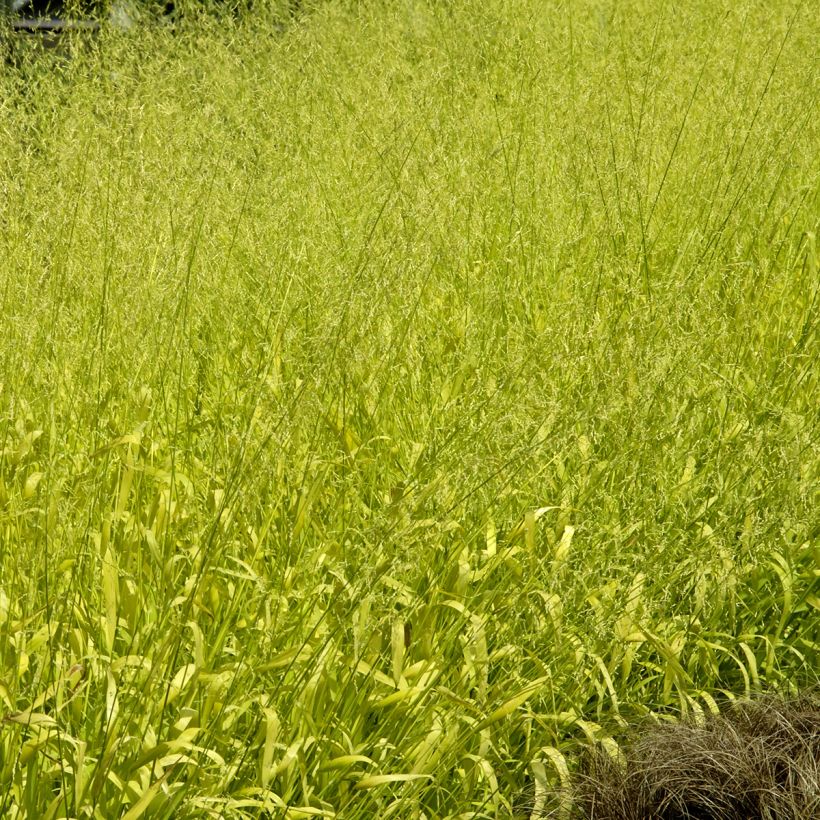

Flowering
Foliage
Plant habit
Botanical data
Milium
effusum
Aureum
Poaceae
Bowles's golden Grass
Milium effusum ‘Bowles Golden’
Western Europe
Planting and care
Sow Milium effusum 'Aureum' in spring or very early autumn, in trays or directly in the ground, in a moist, light and organically rich soil.
The seeds are fine and should be sown on the surface, lightly firmed, but not covered, as they need light to germinate. Maintaining constant moisture ensures regular germination, usually within two to three weeks.
Once the young plants are well developed, prick them out into individual pots, then plant them out in the garden after the last frosts or by the end of summer.
Plants prefer partial shade or dappled shade, in a humus-bearing, neutral to slightly acid soil, always damp but well-drained. This grass dislikes prolonged droughts, scorching exposures and overly dry soils.
Maintenance: ensure the soil remains moist during summer, especially for the first two years. In poor soil, a spring application of well-rotted compost is sufficient. It is a hardy and reliable plant that does not require frequent division. It can be rejuvenated every 4 to 5 years to maintain a dense clump.
Sowing period
Intended location
Planting & care advice
This item has not been reviewed yet - be the first to leave a review about it.
Similar products
Haven't found what you were looking for?
Hardiness is the lowest winter temperature a plant can endure without suffering serious damage or even dying. However, hardiness is affected by location (a sheltered area, such as a patio), protection (winter cover) and soil type (hardiness is improved by well-drained soil).

Photo Sharing Terms & Conditions
In order to encourage gardeners to interact and share their experiences, Promesse de fleurs offers various media enabling content to be uploaded onto its Site - in particular via the ‘Photo sharing’ module.
The User agrees to refrain from:
- Posting any content that is illegal, prejudicial, insulting, racist, inciteful to hatred, revisionist, contrary to public decency, that infringes on privacy or on the privacy rights of third parties, in particular the publicity rights of persons and goods, intellectual property rights, or the right to privacy.
- Submitting content on behalf of a third party;
- Impersonate the identity of a third party and/or publish any personal information about a third party;
In general, the User undertakes to refrain from any unethical behaviour.
All Content (in particular text, comments, files, images, photos, videos, creative works, etc.), which may be subject to property or intellectual property rights, image or other private rights, shall remain the property of the User, subject to the limited rights granted by the terms of the licence granted by Promesse de fleurs as stated below. Users are at liberty to publish or not to publish such Content on the Site, notably via the ‘Photo Sharing’ facility, and accept that this Content shall be made public and freely accessible, notably on the Internet.
Users further acknowledge, undertake to have ,and guarantee that they hold all necessary rights and permissions to publish such material on the Site, in particular with regard to the legislation in force pertaining to any privacy, property, intellectual property, image, or contractual rights, or rights of any other nature. By publishing such Content on the Site, Users acknowledge accepting full liability as publishers of the Content within the meaning of the law, and grant Promesse de fleurs, free of charge, an inclusive, worldwide licence for the said Content for the entire duration of its publication, including all reproduction, representation, up/downloading, displaying, performing, transmission, and storage rights.
Users also grant permission for their name to be linked to the Content and accept that this link may not always be made available.
By engaging in posting material, Users consent to their Content becoming automatically accessible on the Internet, in particular on other sites and/or blogs and/or web pages of the Promesse de fleurs site, including in particular social pages and the Promesse de fleurs catalogue.
Users may secure the removal of entrusted content free of charge by issuing a simple request via our contact form.
The flowering period indicated on our website applies to countries and regions located in USDA zone 8 (France, the United Kingdom, Ireland, the Netherlands, etc.)
It will vary according to where you live:
- In zones 9 to 10 (Italy, Spain, Greece, etc.), flowering will occur about 2 to 4 weeks earlier.
- In zones 6 to 7 (Germany, Poland, Slovenia, and lower mountainous regions), flowering will be delayed by 2 to 3 weeks.
- In zone 5 (Central Europe, Scandinavia), blooming will be delayed by 3 to 5 weeks.
In temperate climates, pruning of spring-flowering shrubs (forsythia, spireas, etc.) should be done just after flowering.
Pruning of summer-flowering shrubs (Indian Lilac, Perovskia, etc.) can be done in winter or spring.
In cold regions as well as with frost-sensitive plants, avoid pruning too early when severe frosts may still occur.
The planting period indicated on our website applies to countries and regions located in USDA zone 8 (France, United Kingdom, Ireland, Netherlands).
It will vary according to where you live:
- In Mediterranean zones (Marseille, Madrid, Milan, etc.), autumn and winter are the best planting periods.
- In continental zones (Strasbourg, Munich, Vienna, etc.), delay planting by 2 to 3 weeks in spring and bring it forward by 2 to 4 weeks in autumn.
- In mountainous regions (the Alps, Pyrenees, Carpathians, etc.), it is best to plant in late spring (May-June) or late summer (August-September).
The harvesting period indicated on our website applies to countries and regions in USDA zone 8 (France, England, Ireland, the Netherlands).
In colder areas (Scandinavia, Poland, Austria...) fruit and vegetable harvests are likely to be delayed by 3-4 weeks.
In warmer areas (Italy, Spain, Greece, etc.), harvesting will probably take place earlier, depending on weather conditions.
The sowing periods indicated on our website apply to countries and regions within USDA Zone 8 (France, UK, Ireland, Netherlands).
In colder areas (Scandinavia, Poland, Austria...), delay any outdoor sowing by 3-4 weeks, or sow under glass.
In warmer climes (Italy, Spain, Greece, etc.), bring outdoor sowing forward by a few weeks.






































